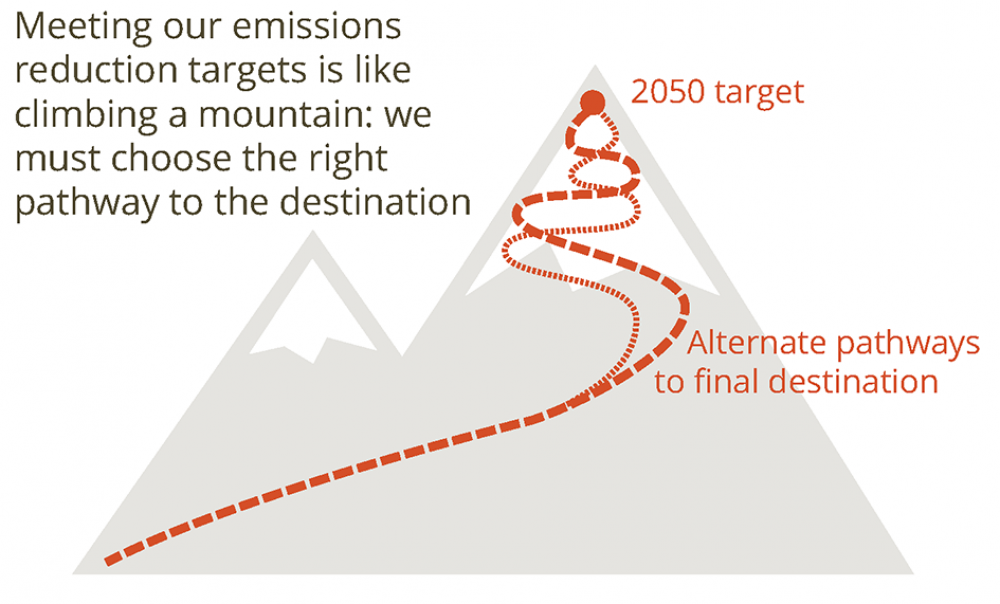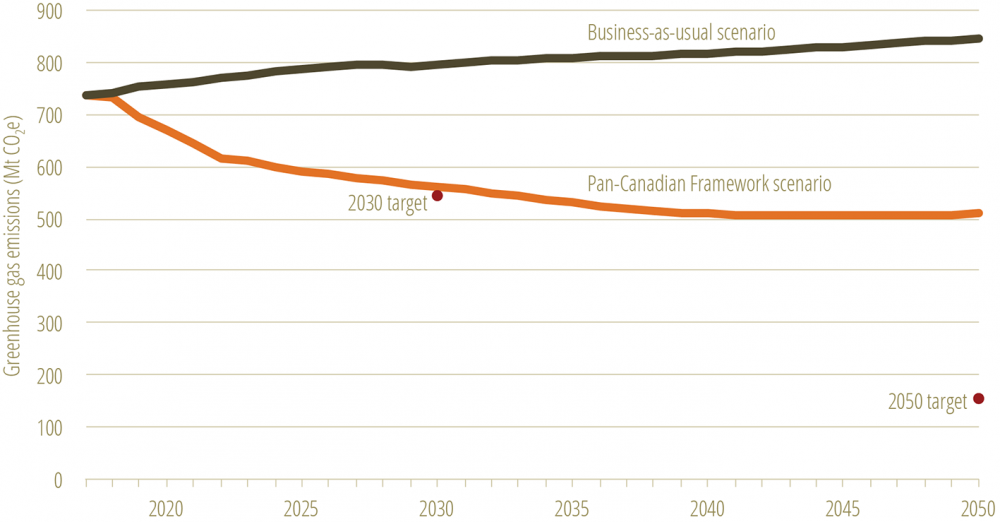Tackling climate change means changing the ways we produce and use energy. As a signatory to the Paris Agreement, Canada re-committed to reducing its carbon pollution by 30 per cent below 2005 levels by 2030. Further, Canada recently committed to become carbon neutral by 2050. This is aligned with the findings of the recent Intergovernmental Panel on Climate Change (IPCC) report, which state that global emissions must come down to zero by 2050 to keep dangerous climate change in check. To chart a path towards meeting these ambitions, the conversation among Canadians needs to be “how do we do this?” How does Canada drastically decarbonize its energy systems, secure a healthy environment, while ensuring it's keeping up with a growing global low-carbon economy? The how is where climate and energy policy comes in, and the answer requires a long-term, transformative approach.
Investigating emissions and technology pathways
There are hundreds of possible climate and energy policy measures; however, they need to be selected and packaged carefully to put Canada on the right path to meeting its emissions reduction commitments and building a strong economy. The Pan-Canadian Framework on Clean Growth and Climate Change (PCF) — the national climate plan — is Canada’s roadmap to meeting these goals. Canada has made outstanding progress to date, including by phasing out electricity generation from coal-fired plants across the country, by putting a national price on pollution, and by reducing methane emissions in the oil and gas sector. However, existing PCF policies must be strengthened and complemented to make sure Canada meets its 2030 targets, and set the country up for success for carbon neutrality by mid-century. Going forward, Canada must continue to put energy policies in place that will deliver long term benefits and avoid technology and infrastructure lock in that make achieving incremental emissions reductions down the road too costly. These include policies like zero emissions vehicle standards, and technology innovation incentives that create significant long-term improvements.
A report published by Canada Energy Systems Analysis Research (CESAR) last year made the argument that setting climate policy is similar to climbing a mountain. We couldn’t agree more — as any mountain climber knows, there may be a lot of paths up the mountain, but only a few will get you to the summit safely and efficiently.

This thinking takes us back to our question of how do we get there. How do we get on a path to mid-century decarbonization? Answering the how and making sure policies are setting Canada up for long term success requires analysis that investigates and quantifies the long term cumulative effects of various policies based on a variety of metrics (e.g. emissions, energy demand, economics, health, etc.). This is where the newest tool in our climate policy toolbox, the Energy Policy Simulator, developed by the Pembina Institute and Energy Innovation, can help.
A free and transparent tool to help
Canada’s Energy Policy Simulator (EPS) is the first free, open-source tool available to explore policy packages that reduce pollution while increasing Canadians’ quality of life. Aimed at empowering civil society and bringing increased transparency and accountability to our energy policies, the EPS allows anyone to explore the combined impacts of hundreds of policies on our environment, health and economy. The EPS can simulate a virtually infinite number of energy futures for Canada and helps us find our way up the mountain, by choosing policy combinations that lead to complementary and long term emissions reductions. Originally launched in April 2018, we updated the tool in January 2019 to include improved data and functionality.
The EPS demonstrates, for example, that while a price on pollution can achieve drastic long-term reductions as a stand-alone measure, other measures strategically combined with a price on pollution will take the country even further towards its climate goals. Other policies can increase the price on pollution’s effectiveness by either amplifying the market signal, expanding coverage, or providing additional, non-emissions benefits.
Understanding these policy interactions is critical for the future success of the PCF and ensuring it leads us to our summit — mid-century decarbonization. The EPS demonstrates that the PCF steers energy systems in this direction, but Canada must continue its efforts to achieve deeper emissions reductions. Policies must be continually revised, strengthened and complemented to bridge the gap to Canada’s 2030 target and make sure the country is on the right track to reach carbon neutrality by 2050.

A tool that is able to define and explore the impacts of an array of climate policy scenarios is key to finding credible and compelling decarbonization pathways that benefit Canadians. As the EPS demonstrates, a carefully designed combination of policies with complementary and cumulative reductions is critical to helping us reach the summit.









